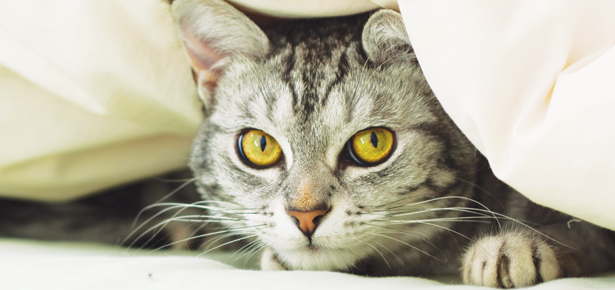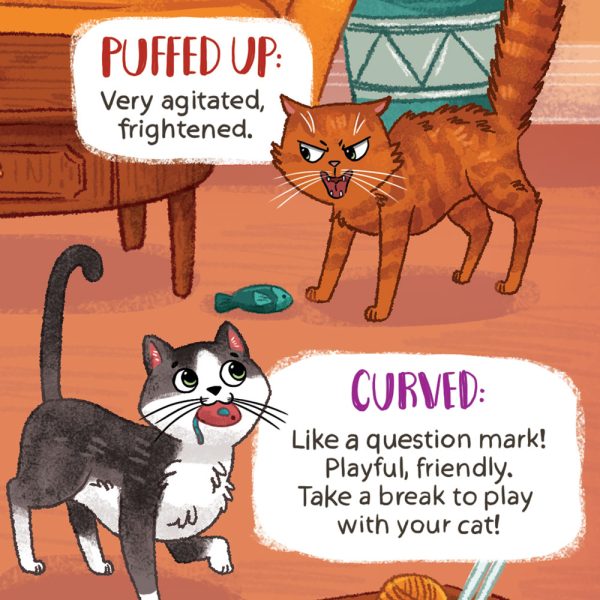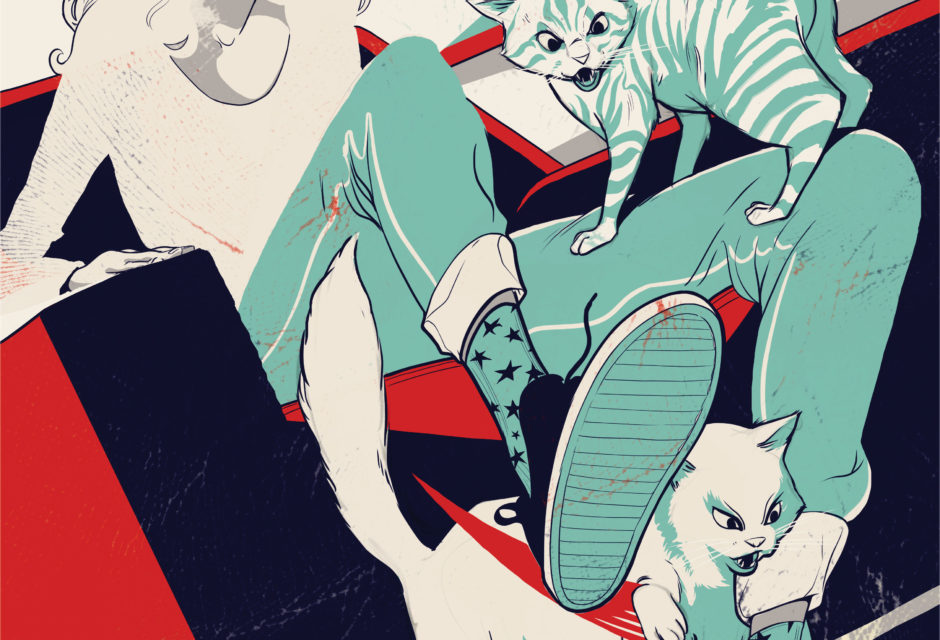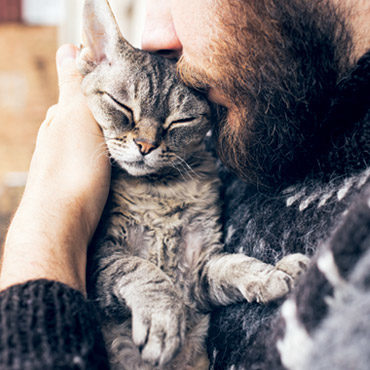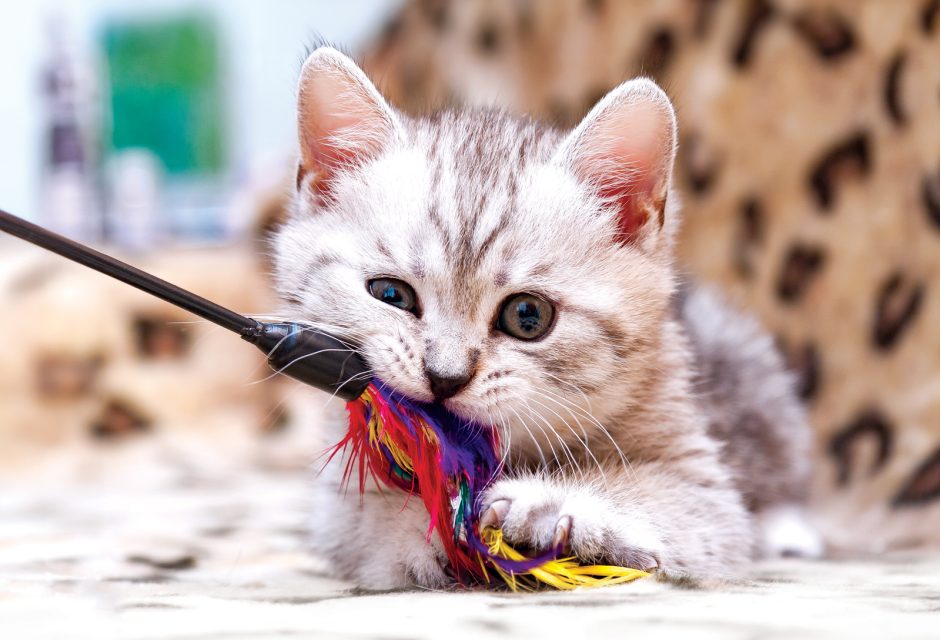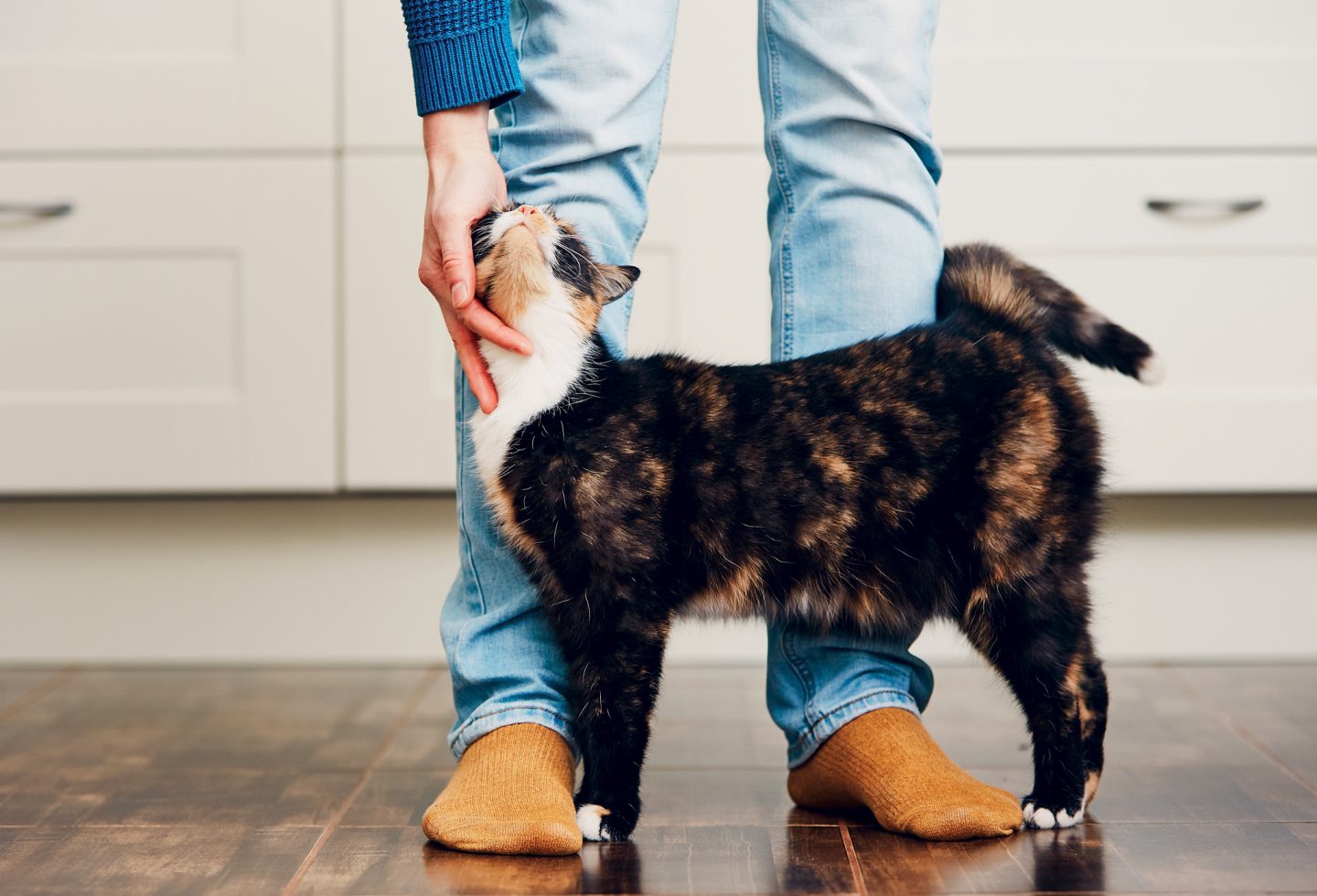
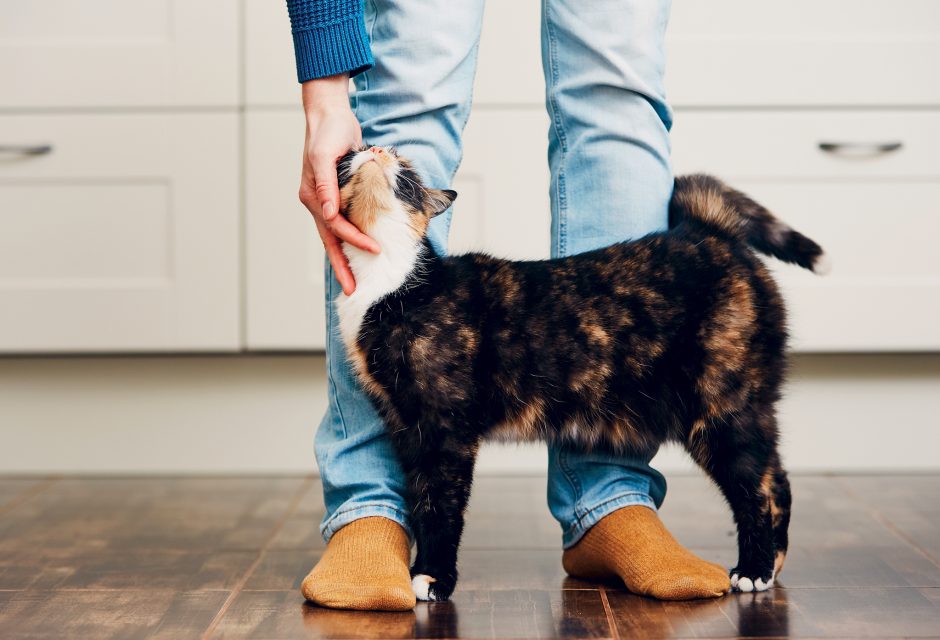
The Love Language of Cats
Yes, your cat really does love you—science has proof
With their wagging tails and slobbery kisses, dogs show their affection in easy-to-understand ways. But any feline fanatic will argue that cats display just as much love, albeit in a less obvious manner. Turns out, science has proven what we cat lovers have known all along.
Kristyn Vitale, an assistant professor in animal health and behaviour at Unity Environmental University in Maine, has spent the last decade debunking the myth that cats are antisocial.
A study she undertook in 2019, published in the journal Current Biology, examined the bonds that cats form with their human caregivers. Researchers observed while each cat and their owner spent two minutes together in an unfamiliar room. The cat’s owner then left for two minutes before the pair was reunited. Like dogs and human babies, most cats demonstrated strong attachment: casting glances back at their caregiver for reassurance, acting stressed when their caregiver exited the room, then relaxing again when reunited. The researchers concluded that cats, like dogs, form an attachment bond with their human owners just like that seen between a human parent and child.
Low-key Love Cues
“Each species has its own universal love language, and its way of expressing it,” says Doaa Kat, a holistic pet trainer in Vancouver, BC. “Hugs and kisses are a universal love language for humans. Tail wagging and running toward us is a universal love language for dogs. The universal love language for cats is by far subtler affection,” asserts Kat, who’s also known as Catffeinated The Pet Mom. “A part of our role as cat parents is to be fully aware of our cat’s unique love languages and know how to reciprocate it.”
Veterinarian Carlo Siracusa gives a historical perspective as to why cats’ cues can be harder to read than those of dogs. “Domestic cats have evolved from wild cats that are solitary animals,” says Siracusa, who is also the Chief of Animal Behaviour Service at the University of Pennsylvania. “Even though the domestic cat is a social animal, they did not evolve a sophisticated body and facial language to communicate with other individuals, as dogs did. This is why their social behaviour relies a lot on more subtle behaviours that are sometimes missed by humans.”

insonnia/Bigstock
Subtle Love Behaviours of Cats
According to Researchers & Behaviourists
#1. Staying Nearby Proximity is probably the strongest indicator of a cat’s affection. “Cats use distance versus proximity to express how much they feel comfortable around someone,” Siracusa says. “They tend to spend a higher amount of time close to their ‘preferred associates,’ aka best buddies, towards whom they also display more affiliative behaviours, like rubbing and grooming.”
Bailey Eagan is a PhD candidate at the University of British Columbia who studies animal welfare, and she has a particular interest in cats. She notes that domestic cats have been staying in close proximity to their preferred humans for a very long time. “When we look back historically in ancient Egyptian art, it’s the same thing. Cats are sitting under the chairs or just a little bit off,” she says. “Behavioural progress for a cat might be one day they’re comfortable with you at three feet of a distance, but then the next day they might be comfortable eating off your hand.”
All of which helps to explain why friendly feline faces were popping up (and stealing the show) in every online meeting during the early days of the COVID-19 pandemic. Housecats were sticking close to their favourite newly housebound humans.
#2. Meowing Many pet owners don’t realize that adult cats rarely meow to each other. Linda Hall and Rita Reimers, the pair of Certified Cat Behaviourists behind the 19 Cats and Counting podcast, explain in an email the meaning of this behaviour: “If your cat meows to you, that is a strong indicator of love. Past kittenhood, cats do not meow, and they don’t communicate with each other with meows. It’s reserved just for us humans.”
Humans have become quite adept at interpreting those feline sounds. In a 2014 study conducted at Lund University in Sweden, listeners showed a high degree of accuracy at differentiating between meows recorded during feeding time and ones recorded while waiting at the vet. But we humans are far less able to interpret the subtle ways that adult cats communicate with each other, which include scent, physical contact, facial expressions, and body language, such as tail posture.
#3. Purring “Cats are subtle. They show love quietly,” says Olivia Kepner, a zookeeper in San Diego. Compared to dogs, “cats express love in quieter ways, like purring and nuzzling.”
Researcher Eagan has conducted studies in animal shelters, and she laments that she rarely encounters a purring cat at work, only while at home with her own pet. She notes that purring is “a lot more rare in shelter cats because they’re generally quite stressed.”
Although cats sometimes do purr in stressful situations, such as when experiencing pain, illness, or fear, the endearing low-pitched rumble occurs most often when a cat feels contented. Clever kitties have even figured out a way to add further layers of communication to the common purr. A 2009 study conducted at the University of Sussex in the UK showed that domestic cats use a special type of purr to solicit food, and this purr is easily identified—even by people who have never owned a cat—as both less pleasing and more urgent than a typical purr. It says, in effect, “Feed me now.”
#4. Giving Slow Blinks One of the most interesting—but frequently overlooked—ways that cats communicate affection is through the slow blink. Eagan describes this as “a cool, lovely, kind of secret messaging that we have with cats.”
UK veterinary surgeon Daisy May explains the meaning of this behaviour. “When your cat slowly blinks at you, it is communicating trust and contentment,” she says. “It lets the cat say they feel good around you.” Unfortunately, since a slow blink is much less dramatic than a dog’s eager jumps, barks, and wagging tail, it can be easy to miss this small but meaningful expression of a cat’s love.

GeekTechLive/Bigstock
#5. Scent Marking Cats use their scent to mark their favourite humans. “Nuzzling against you mixes their scent with yours, a territorial sign of acceptance and belonging,” May says.
Eagan agrees that sharing scent is an important way for cats to demonstrate affection. “Head rubbing is a big one that I see,” she says, and she also mentions that cats use “the scent glands that they have in their cheeks and face and flanks.” A cat’s gentle head-butting, also known as head-bunting, is both marking their scent on you and seeking your loving attention in return.
#6. Kneading Kittens knead to stimulate their mothers’ milk during nursing, and most cats continue this soothing act of “making biscuits” into adulthood. Scientists don’t entirely understand why cats knead. Perhaps it’s to mimic the comforting feeling of being cared for as a kitten, perhaps to create a soft place for sleeping, perhaps to mark territory. As Eagan points out, “There’s also scent glands in their paws.” One fact beyond dispute, however, is that a cat kneading on your lap is conveying trust, contentment, and love.
#7. Grooming Another way that cats display love is by grooming their preferred humans and other pets in the household. Hall and Reimers explain in their email: “Once a cat begins to trust you, he will give you slow blinks to indicate trust, will rub up against you to mark you with their scent, and will also groom you to show you belong to their family.” This behaviour hearkens back to the allogrooming (cleaning a member of the same species) that a mother cat does for her kittens, which teaches the kittens how to clean themselves, displays her affection for them, and strengthens their bond. Creatures as different as mammals (including humans), birds, fish, and insects all display social grooming behaviours.
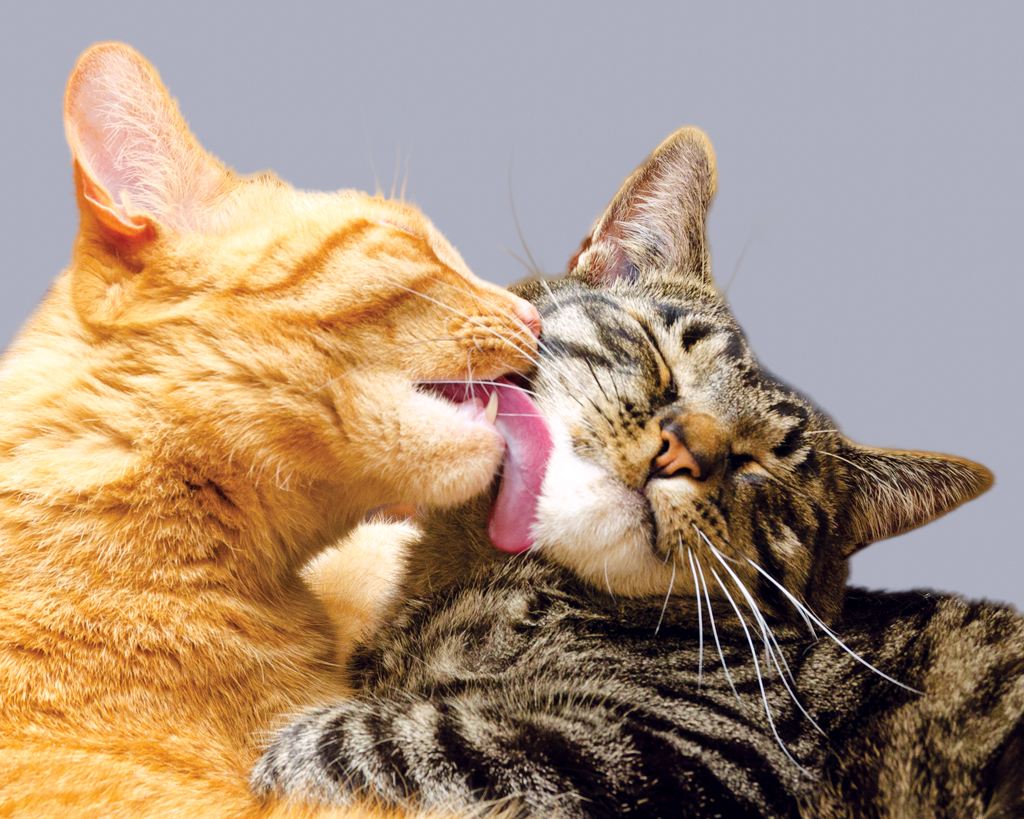
karamysh/Bigstock
#8. Bringing Gifts Anyone who’s ever lived with an outdoor cat has, at some point, undoubtedly been presented with a rodent or bird carcass. Daisy May, the veterinary surgeon, explains the meaning of such offerings. “Cats also demonstrate caring by sharing ‘gifts’ of prey, even if the deceased mouse on your doorstep may not be welcomed! It’s not welcoming for us, but for them, being an evolutionary creature that domesticated itself, well… It’s quite a nice gesture when you think about it,” she says. “It shows they see you as family and they trust you.” In addition to sharing their food, your generous kitty might be trying to teach you how to hunt, an important survival skill for cats in the wild. When viewed this way, that “gift” of dead prey can be interpreted as quite the act of caring.
#9. Showing Trust Behaviours Hall and Reimers point out a key difference between cats and dogs: “Most cats aren’t quick to trust—a person must earn their trust and love. We like to say that dogs love and trust until you give them a reason not to, but cats don’t love and trust until they are given a reason to do so.”
A loving cat clearly displays this trust. “Each cat is unique. Just like people, they may show their love in different ways,” says LeeAnna Buis, a Certified Feline Training and Behaviour Consultant in the Pacific Northwest. “The primary thing I look for is trust. If your cat acts in ways that show they trust you, that’s the best sign of love in my book—whether it’s showing their belly, sleeping with you, or even just sticking close to you during a stress event because they feel more secure with you than hiding under the bed.” By exposing areas such as the stomach and throat, or falling asleep on you, the cat becomes extremely vulnerable, which an animal only does willingly when feeling the utmost trust and love.
#10. Playing One way to identify love behaviours in cats is to analyze scenarios where those behaviours are absent. In Eagan’s research with shelter cats, she usually sees the creatures when they are feeling very little trust, comfort, or love. “What behaviours are we never seeing when cats are scared?” she asks. Scared cats rarely display any of the nine love behaviours listed above, nor do they play much. In contrast, cats that feel loved demand regular playtimes with their owners. Playing allows cats to socialize and exercise, it strengthens social bonds, and it keeps the cats engaged, not bored.
5 Ways To Return Your Cat’s Love
Now that you can identify some of the subtle ways that cats demonstrate their love, it’s time to return that affection in ways they understand. “Pay attention to your cat’s body language, how they act around you, communicate with you, look at you, spend time with you, and how they seek your company,” says Doaa Kat, the holistic pet trainer. “Understand your cat’s personality, physical boundaries, and unique needs and wants, then properly respond to them.”

O_Zinchenko/Shutterstock
#1. Respond on Their Level
“Meeting them where they’re at” is how Eagan describes this. “The energy that they’re usually giving off is what you’re trying to match,” she says. Get down on the floor with your cat, mimic their body language, return their slow blinks, and speak in a cat-friendly way. A 2022 study in the journal Animal Cognition showed that cats react positively to their owners’ cat-directed speech, which is higher-pitched than normal speech, similar to how adults talk to human babies. Eagan also suggests using your cat’s name frequently, explaining that “we have research showing that cats recognize and respond to their names.”
LeeAnna Buis mentions another key point: “The most important thing is to use your cat’s love language—not yours.”
#2. Respect Their Boundaries
Cats are good at making their boundaries evident. “You may want to show your love by rubbing that belly and giving 100 smooches. Your cat may not be as excited by that. Think about what your cat loves and respect their boundaries,” Buis says. “Show your cat that when they give you a little love, you’ll give it right back in ways they enjoy and not ways that make them want to squirm out of your arms and get out of there. Cats are high-frequency, low-intensity interactors—the opposite of humans, who are low-frequency, high-intensity. So, don’t overdo it. Keep it simple.”
#3. Provide an Appealing Home
Cats want a calm, quiet home with plenty of cozy spots, things to scratch and climb on, and areas that feel like their own territory. Eagan notes that “they really like routine and having agency and control over the situation, like being able to leave if they want to.”
Hall and Reimers offer other important advice: “Be sure you have toys and cat trees for them in places where you spend time, not off in another room. Your cats want to be where you are.”
#4. Pet Them Gently
Hall and Reimers mention how important petting can be in creating a loving bond: “Gentle touch will show your cat that they can trust you, which, of course is the foundation for love.” Petting involves showing attention, exchanging scents, and reinforcing social bonds—plus, it simply feels good for both cats and humans.
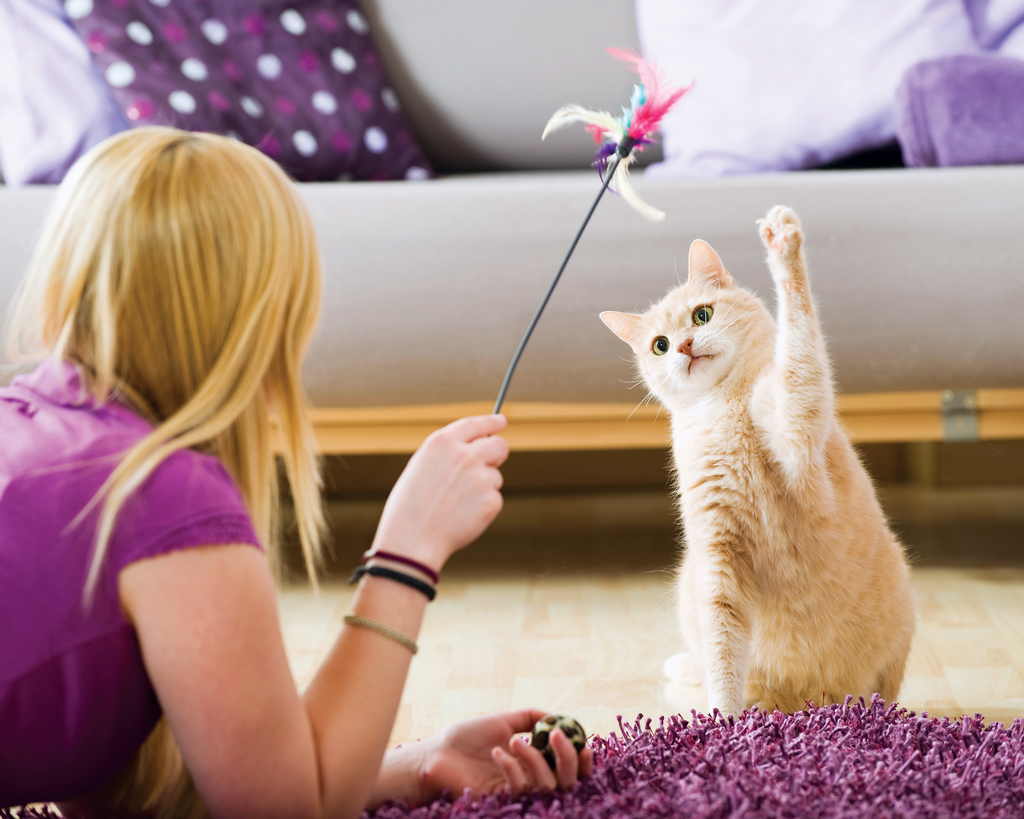
Dora Zett/Shutterstock
#5. Play with Your Cat
Respond positively when your cat initiates playtime (or any other type of interaction). According to a 1991 ethological study by the Institute of Zoology in Zurich, more time is spent interacting overall when the cat initiates the interaction than when the human does. To maximize your cat’s playtime enjoyment, use a prey-like toy, such as a wand toy, for a few minutes before rewarding the cat with treats.
Daisy May says, “Creating a calm home, respecting their space, and engaging in gentle play are all important ways to reciprocate your cat’s understated but meaningful affection. While different from a dog’s overt displays, understanding your cat’s unique love language and properly interpreting their subtle signals allows for a close companionship.
This article originally appeared in the award-winning Modern Cat magazine. Subscribe today!
Join the newsletter and never miss out on cat content again!
"*" indicates required fields
By clicking the arrow, you agree to our web Terms of Use and Privacy & Cookie Policy. Easy unsubscribe links are provided in every email.





